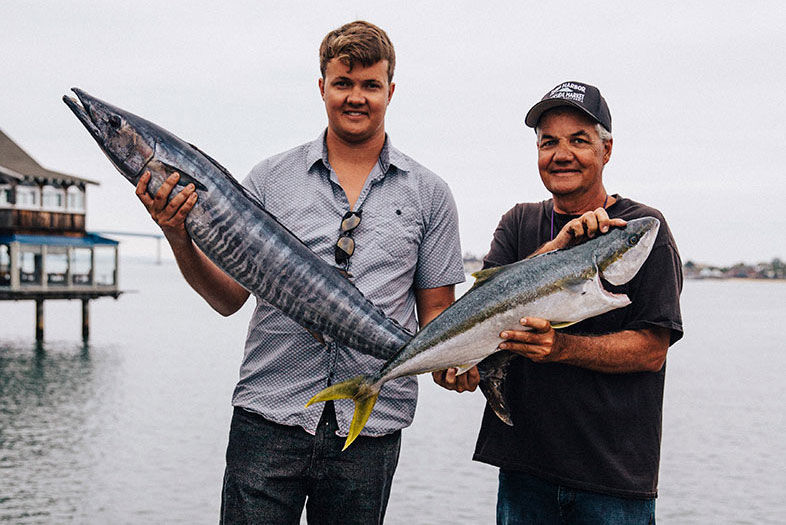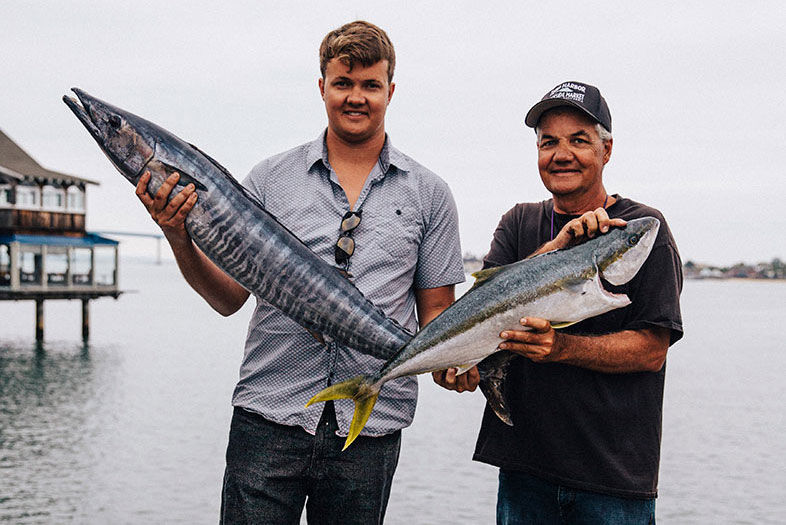“The most endangered species in the water is a fisherman.”
One of the country’s most sustainable seafood chefs, Rob Ruiz of Land & Water, told me that months ago. Hurts. A sad, hard fist in the solar plexus. Fishermen and women built San Diego. But San Diego is also still building, and the fishing families aren’t the only community who has needs and wants and rights.
It’s a crucial, crucial time for the future of our city. If you live here, you need to know that. It’s speak-up-now-or-don’t-complain-later time. The $2 billion redevelopment plan for our waterfront is in its final stages. That space along the San Diego Bay is the most valuable piece of land in Southern California—and the plan will dramatically transform it forever.
As someone who studies food, my focus for this exposé was how the fishing community fits into that future. It wasn’t supposed to be such a big deal. I was supposed to write a portrait of local fishers and the success of their weekend market on the docks. Go touch some tuna, talk to the tan people who catch them, paint a picture with words.
But I scratched the surface, and the real story exploded all over me. I spent weeks walking the docks, attending Port meetings, hours upon hours talking to fishers and scientists and government agencies and NGOs. On vacation in New York, I turned the hotel lobby into a war-room, with diagrams of how the pieces fit together.
Near deadline, I had 55 pages of interview transcriptions—over 30,000 words, hundreds of facts, names, dates, staggering dollar amounts, political dramas, grouses, hopes, dreams. I had to boil it down into 3,000 without losing its soul.
Everyone’s story was touchy. The developer has billions on the line. The fishers have their livelihoods. The Port needs to be seen as a capable steward of the public land. The scientists have their professional credibility out there. It’s my goal to listen, research, fact check, analyze, and get it as right as possible.
The story was published yesterday. I’ve been flooded with emails and texts and calls. Most of them are positive. But I’m sure some people won’t be happy.
For example, fisher after fisher told me that nongovernmental environmental groups (NGOs), while noble in their pursuits of sustainable seafood, rely on dramaticized fear tactics to raise money. And those fear tactics unfairly paint the U.S. fishing fleets—widely regarded among the most sustainable in the world—as dolphin and turtle killers.
A very nice, helpful woman from Oceana tried to explain the environmental group’s campaigns in the most hopeful light. She expressed support for fishermen and women. After scouring their website for information about what U.S. fishing fleets had done right and finding instead mostly news of their crimes—the reality seemed less supportive.
At least in their communication efforts (videos, press releases, campaigns, etc.), NGOs show less interest in publicizing the fishing community’s sustainability efforts than they do documenting their shortcomings. Maybe they’ve found that focusing on the problems is a more effective route toward their universally good goal. If they attain their goal of sustainability (the universal good goal), does it matter if fishers’ reputations are portrayed unfairly? Is the common good worth the collateral damage?
I would hope there’s a more reasoned, fair route for NGOs to take in their pursuit of the good thing. Along with ringing the alarms about bad practices, they could more consistently sing the praises of the responsible fishers who are on the front lines enacting real change.
I have so many stories and facts and ideas didn’t fit into the space allotted in our magazine. I’ll be relaying some of them here over the next month. Thank you to all of the fishermen, fisherwomen, scientists, processors, developers, Port Authority members, and lawyers who helped bring focus and human faces to a byzantine future that’s just now unfolding.
And thanks for reading, guys.

Behind the Big Feature
PARTNER CONTENT
Fisherman Nick Haworth and his father, David Haworth, who is now retired | Photo by Dewey Keithly

















